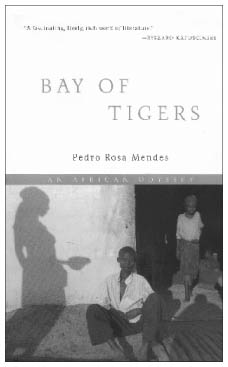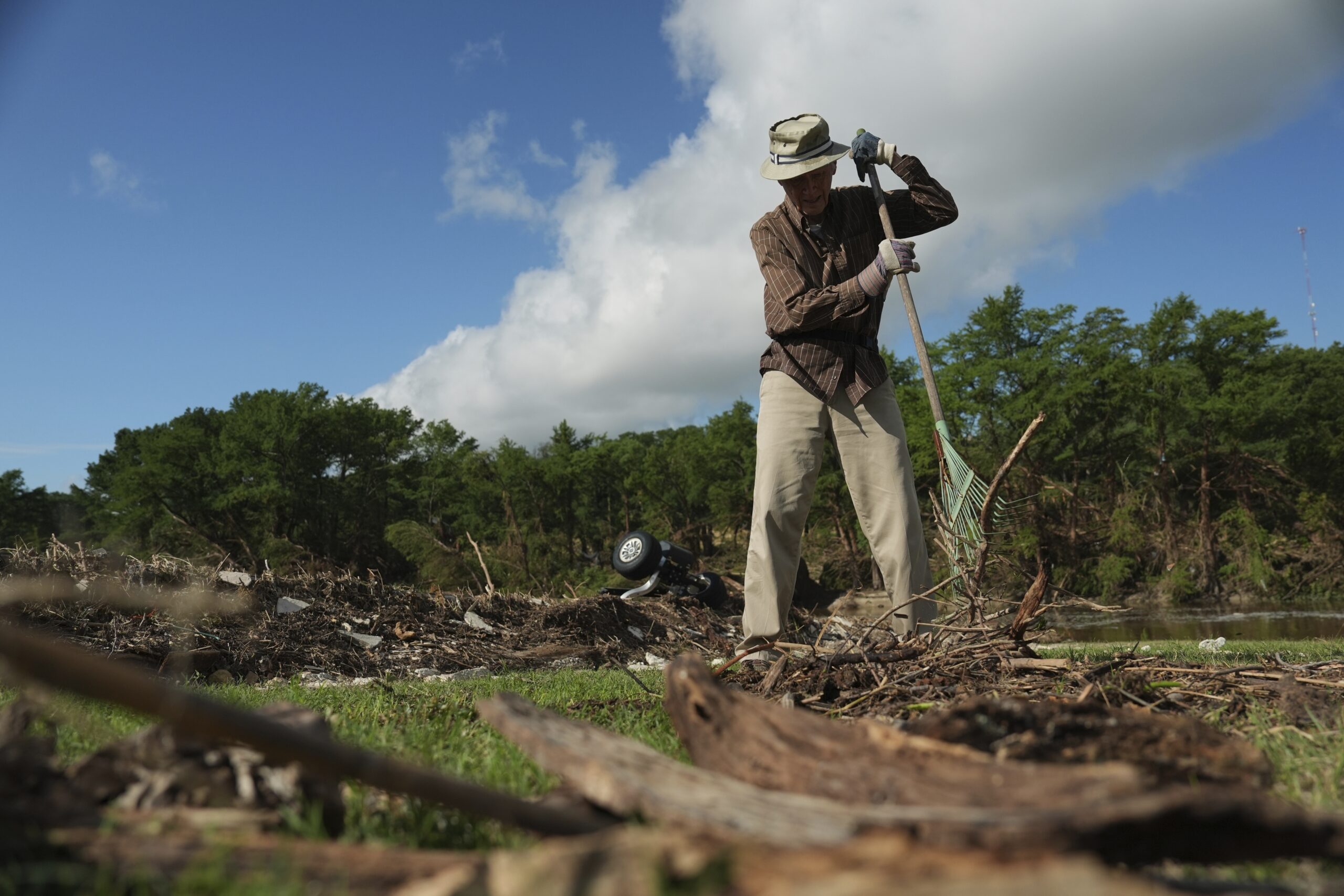Life in the No-Go Zones
by Emily Rapp
On March 1998, I helped organize an NGO-sponsored conference for young Africans. As they traveled from various countries, their journeys across borders were never without complications. From my office in Geneva I wrangled for visas, while from Zimbabwe, South Africa, Sierra Leone, Liberia, Angola, Ethiopia, and other places, they took taxis to embassies, (often camping out in front of them until “the right person” arrived), offered monetary bribes for visas (some of which later appeared on expense reports), and traveled by camel, horse, or overcrowded bus with only the sky for a ceiling. Twenty out of the 40 who had been invited finally arrived in Okahandjah, a small town in Namibia located on an occasionally impassable road. It was there that I met Marcus, a 23-year-old Angolan who needed medical attention when he arrived because his shoes, made of tire parts, had practically melted into his feet; he left a trail of charcoal-colored stains wherever he walked. He said that he had walked from a bus stop “near Angola.” Both impressed and horrified by the strength of his feet and his makeshift shoes, I asked him exactly from where “near Angola”–which border town–his journey had begun. “The town on the other side of the planet,” was his reply.
In Bay of Tigers: An African Odyssey, Portuguese journalist Pedro Rosa Mendes, now 35, documents a 90-day journey from Angola across Zambia to Mozambique that he made in 1997 during a brief respite from “the madness around the dinner table,” his term for Angola’s seemingly endless civil war. Traveling more than 10,000 kilometers between the two former Portuguese colonies, he visited cities that for all we know about them might as well be on a different planet: Lubango, Luanda, Lobito, Benguela, Cuito, Zumbo, Chongoroi, Quelimane.

Organized into anecdotes and observations of the landscape and people, as well as the author’s own diary entries and interviews with guerilla generals, town leaders, street buskers, and former child soldiers, Bay of Tigers (the title refers to an abandoned fishermen’s colony near the Namibian border), has a gritty, surreal quality not unlike that of a documentary film in which disturbing and occasionally horrific images are arranged in an artistically beautiful way.
Mendes offers little historical background within the text; instead, the reader must piece it together by consulting the extensive glossary with its list of acronyms that spell out wars and guerilla groups, explaining who switched sides and when and why. In 1974 Angola declared its independence and civil war followed. The Union for the Total Independence of Angola (UNITA), led by Jonas Savimbi, and the National Front for the Liberation of Angola (FNLA), founded in 1963 by refugees in the Congo, were supported by the United States, its Western allies, and South Africa. The People’s Movement of the Liberation of Angola (MPLA), founded by Agostinho Neto in 1956, was backed by Cuba and the Soviet Union. Division among the various liberation movements had a long history that pre-dated independence from Portugal. Eventually the MPLA prevailed. Aligning itself with Portuguese interests and the metropolitan elite, it became the state party based in Luanda, turning away from Marxism-Leninism only in 1992, when President dos Santos officially adopted “democratic socialism.” In the meantime, UNITA built up one of the largest armies in Africa, with support from the Ovimbundo ethnic group and the recruitment of child soldiers. Apart from a brief period of UN-sponsored peace, Angola, as described by Mendes, is a place where “wars come like the days” and politics is geography. “You fight for and vote for the place where you are,” he writes. The enemy, however, is just as likely to be foreign as Angolan–unexploded mines and missiles come from South Africa, China, Korea, Russia, Israel, and the United States.
Mendes writes in a brave mix of genres, and his writing style is eclectic, erratic, and fast-paced, lapsing occasionally into the non-narrative and nonsensical. At its best, the book is lyrical and euphoric in its strangeness. At its worst, it feels manipulative and contrived, its organization odd to the point of being annoying, particularly when the looping and leaping quality of the narrative appears to be deliberately disorienting–like a hand-held camera in a documentary feature–in a way that seems to have been designed to mimic the author’s own messy journey.
He is deeply concerned with the way that perceptions of a journey literally shape (map) geographical place and identity; this single theme recurs throughout the book. “An arrival is at the same time a creation (a place emerges), a mapping (it receives coordinates),” he writes. “[T]he traveler IS merely his account, he identifies with it because from it he extracts his identity; he doesn’t exist outside the map: traveler and map are a single entity.” Decades of war in Angola and surrounding countries have produced a region of displacement and total violence; the actions of many have shifted the map of the country, its coordinates, its very being, making it into something that appears on no map at all: “War was the erosion, eating away at the land and its inhabitants,” Mendes explains. “Benguela is terra firma. Lubango also. Huambo and Cuito once were. What’s in between is indescribable. No one is from the place where they are living–men and women were tossed the way rough seas toss boats onto the dunes.” Much of Angola is now literally unmappable, a grid of no-go areas. Mendes navigates these dangerous places, usually under cover of night, in darkness so total and terrifying that there is no way for him to distinguish his own face or hands or the bodily shapes of others.
Referred to as simply “the journalist” by both his protectors and the regional warlords who torment him–a title that saves his life several times–he realizes that in a place ravaged by war, identity is dictated by fear: “Fear is the map and the obligation it imposes.” He follows this map to its outer limits; what he finds in this new post-war, but war-like landscape is sobering. He rides in cars and buses that break down every few feet in places where every step forward could be a step into a landmine. He argues with generals who think he’s a spy and keep him under arrest for days with little food or water. He risks his life to make a midnight phone call just to say “Hello! I’m alive!” In a place where there are no mirrors, identity is replaced by familiar sounds and the rhythm of the rituals of living. “Wake up with rats,” he writes. “Go to sleep with fear…Vomit your own smell…Listen to the wind beneath the divan.”
The chapters have no unifying style; some are fictionalized scenes of actual events written to resemble a movie script, others feel like excerpts from his writer’s notebook. Despite the oddities and discrepancies in his style, Mendes should be commended for approaching each person not with a solo traveler’s voyeuristic bravado, but rather with a gentle reverence. “In the Angolan emptiness, places are people.” He takes his role as storyteller very seriously, and he’s good at it. While writing about cities where the distribution time of the World Food Programme dictates people’s lunch breaks, where warlords rule from bombed-out ruins, where people without running water drag buckets up several flights of stairs, he manages to avoid easy melodrama or pity. Again and again he comes back to the land and its people: the way light falls, the way people use their imaginations to survive the “brutalizing melancholy” of their lives.
“A very young guerilla,” he writes, “muscles bulging under his ragged uniform, and feet jammed into the remains of his sneakers. They ordered him across the river… stupidly risking his skin to buy tobacco and beer for the officers.” Here, with a novelist’s sense of observation and detail, Mendes shows how brutality breeds brutality. Most of his stories ring terribly true. Only occasionally does the dialogue feel reconstructed or didactic. Relying on a collage of voices, he documents a place where “death is cheap” and “enemies are everywhere” in “a land of guerillas and no other crop.” He is at his best when he avoids philosophical musings that occasionally dip into melodrama (“That’s how the journey is: the direction doesn’t matter, and any course ends inevitably in the same place. Destiny–the first, the last, the only station”) and simply lets the people speak for themselves, allowing the reader to flip back and forth between the glossary and the text, fitting the individual stories with the acronyms and history in the back.
One of his most interesting observations is that “the war made Angolans, even the uneducated, into people with an elevated perspective of life. With a big imagination.” He meets a man who finds his own way to mark time in a place where no calendars exist, poets in Luanda who write on bullet-stroked walls, former rebels (his own escorts) who drive a car literally into the ground and send him to a mine-filled area to barter for a part. He recounts the story of a mechanic who escaped deep poverty in Portugal for a better life in Angola, where he saw a bathtub for the first time. Through Mendes we meet Domingo, a former child soldier with “eyes aged by panic….Between birth and war, Domingo has no biography: it was merely the brief time it took for him to grow big enough to hold a machine gun in his hands, hatred on his lips, and fear in his legs.” Everything is in exile in this book: bodies, memory, language, and even time and what we do with it. One haunting chapter simply lists the names of women aged 24 to 69. Their husbands are either missing or dead. All have several children; all have menial jobs. “They can’t read, they have no profession, they know only how to work the land, but they have no land. They came from the villages that were burned.”
Mendes clearly has deep empathy for settlers and natives alike. He subverts and confounds expectations, quick to turn stereotypes and quick assumptions on their head–with one glaring exception. His treatment of amputees contrasts starkly with his otherwise delicate and scrupulously fair treatment of the other subjects in the book.
The international campaign against landmines has long used amputees as metaphors for a kind of death; they are depicted in video and print material as hopeless specimens, half-people that the world must account for. A tenth of the world’s one hundred million landmines are buried in Angola. Here also, amputees serve only as a metaphor; they are not-quite-human bodies meant to convey a message of death, appearing to have no agenda beyond the delivery of that message. “They come, testifying to nightmare and miracle, hugging the silhouettes of trees, merging with them, walking on their roots, bones, trunks, stilts, crutches: A new species, half man and half plant, half living and half pretense.” Mendes’ description is enough to make anyone cringe, disabled or not. It gets worse: “The demobilized, the mutilated, and the jobless emerge from the ghettos that contain them. We go through Chongoroi: they attack the train, tossing their crutches and sugarcane stalks aboard before running on prostheses and hopscotching to gain momentum to jump onto the moving cars. The legless, lacking that ability, look at us in fury, condemned to remain behind, and ask for one last favor from the gravel, inches away from being ground up by the train’s enormous wheels.” He identifies these people as “the ones who die.” While he uses other anecdotes to illustrate the triumphs and losses of a single life, he groups the amputees under the banner of “the mutilated.” Coming from a writer who seems to go out of his way to make things difficult and complicate our impressions of the world, this is too easy and disappointing.
“Every village is an island,” writes Mendes. “Every person also. They drift along the edge of the continent that was once theirs: the memory of their parents, the memory of the group, the religion of their grandparents, and now the language of their children, the salt they don’t have, the fire they must go even farther to find. Benguela, Luanda, Lobito: in Angola only the shores are terra firma, and the greatest worry is being submerged.” In Bay of Tigers, voted best Portuguese novel by the Portuguese Pen Club and translated into five languages, Angola emerges as a world where the war has officially ended, but all sides refuse to go home. Everyone lives in a “spectatorless rodeo of violence” where “the lie is to survive.” Angola has all but fallen off the map, replaced by other wars, other deaths. And that is precisely the author’s point–it’s what gives his writing a sense of urgency.
For me, Bay of Tigers makes all too clear what lay beyond the sandy sunswept plains just outside the staff tent where I briefly worked in Africa. It also makes clear what it must have meant for Marcus to cross the border that divides Namibia and Angola. I knew nothing of his political affiliations or experiences; I didn’t ask. I simply got what he required–sandals and ink-pens–and lent him the desk in the tent whenever he asked for it. Years later, I can still see his hands working carefully in the dim circle of light from the single bulb in the tent, sweat glistening in his beard, his dusty heels, shod in new, bright blue sandals crossed behind him underneath the creaky wooden chair. Carefully he pushes tiny pieces of paper into the pens so that through the cheap plastic, just above the reservoir of cheap ink, reads a singular message: “Pray for Peace in Angola.”
Observer intern Emily Rapp is writing a novel about Ireland.


